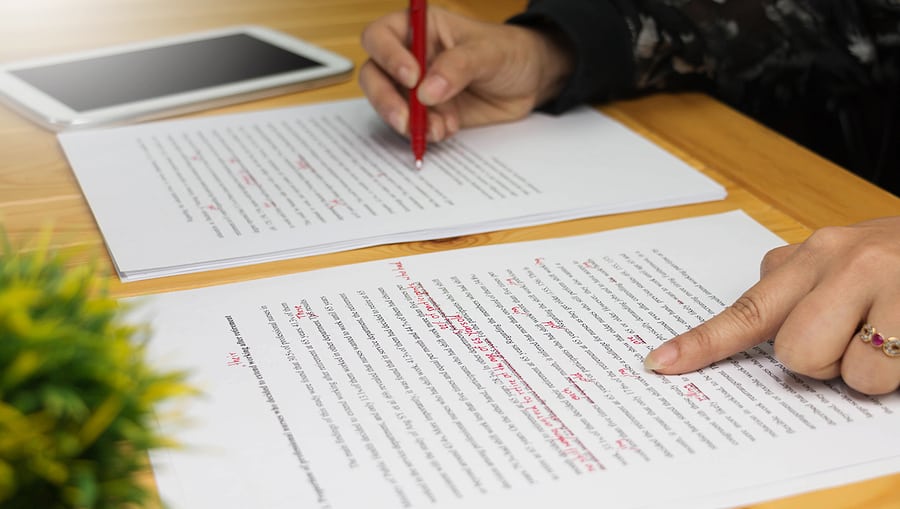The Differences Between Translation Errors and Preferential Changes
A handwritten translated text with translation errors that have been marked is not quite the same as maths or chemistry because translation is not a precise science. When the quality of a translation is assessed a lot of subjectivity is involved that can cause a certain amount of frustration for clients and their chosen translation company. The clients might feel that the translation is sub-par while the translation companies may not agree. There is this confusion due to the lack of understanding of the differences between translation errors and a preferential change.
What are “translation errors” and “preferential changes?”
A “translation error” refers typically to objectively quantifying issues like spelling mistakes, wrong choice of words, inaccurate grammar, poor word choice, a term that has been mistranslated, and absent or added content. For instance, translating “car” to mean camión (truck) in Spanish is obviously incorrect and there isn’t much room for interpretation.
A “preferential change” is referring to the preferences of words or style from a single person (or a translator) to another individual. But translating “car” as auto, coche, or carro each of the terms means in Spanish “car” and all of them are correct. If a client wishes to alter auto to carro in their own translation, that means it is a preferential change, but not a mistake in translation.
Switching over numbers or dates so that they are incorrect, switching the object and subject, or using a verb tense that is wrong are all instances of another mistake in translation that are indisputable.
Unlucky, for a client and a translation reviewer alike, appraising the differences between a translation error and a preferential change isn’t always black and white. For instance, while translating a German auto patent to English for a United States client, one translator could use the term Getriebe as “gearbox.” “Gearbox” would also be a valid translation of ‘’transmission’’ which is the original German term that is more commonly the word used in the US. So even though “gearbox” is not technically wrong, the translator didn’t consider thinking about the targeted audience in the translation.
Another matter that appears often is the use of excessively “literal” translation or “word-to-word” translation. Typically, a translation would not be just a literal “word-to-word” translation of a source-language text into the targeted language, as grammar and sentence structure, etc. often vary quite a lot from one language to another language so more literal translations could be necessary.
The targeted audience and intention of the document perform a key role in deciding how the translation should be completed. It is important to not forget that translators are hesitant to move away too much from the source material. In these cases, localization or transcreation might be the more appropriate solution than translation.
Additionally, a translation that seems to be more “literal” than the client’s internal reviewer does not mean that the translation is wrong. This depends on the conditions and context as it could just be a stylistic preference. Certain kinds of very literal translations may also be seen as “incorrect.”
To avoid any need for huge preferential changes to translations, which could take up a lot of time for the clients and translation providers, is to ensure that the translation provider is provided with all essential information as well as the context up-front so as to offer the best available translation. For instance, a glossary and style guide could go some way to help avoid these kinds of issues.
Most translation services ask clients to provide a glossary, style guide, and a translation memory database so that preferential changes, as well as translation mistakes, can be kept at a minimum.



